#russian empire style
Photo



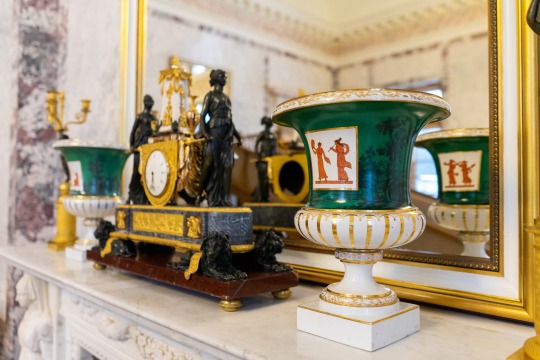
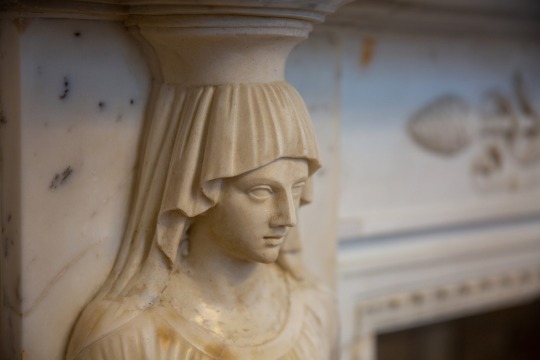
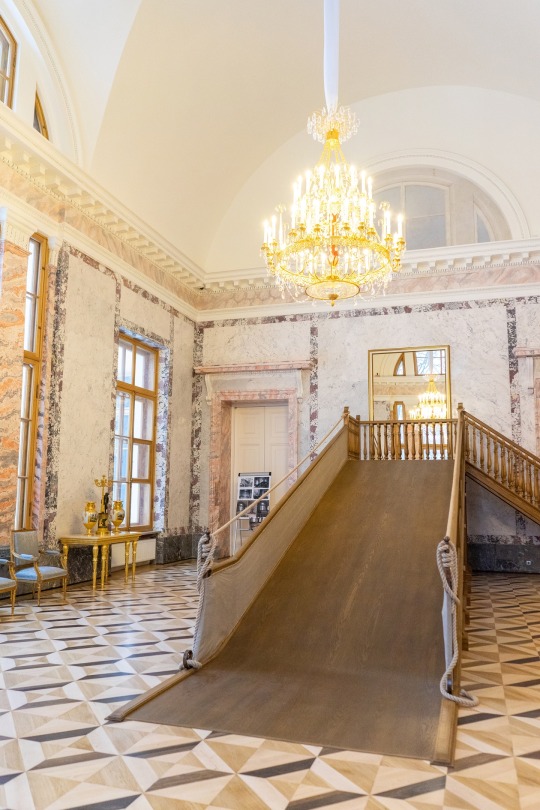

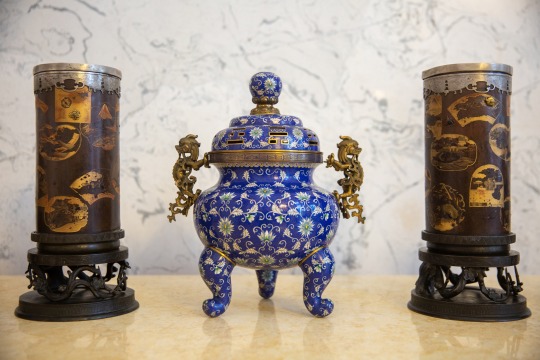
Yesterday, GMZ Tsarskoe Selo (the Tsarskoe Selo State Museum Preserve) published a generous photographic spread on the now beautifully-restored Mountain Hall which visitors can now walk through as part of the permanent exhibition of recreated and restored interiors in the Alexander Palace!
This part of the project to rehabilitate the Alexander Palace into part museum, and part multi-resource centre has been much discussed. This room, with its wooden slide or "mountain" as slides are known in Russia has been meticulously and painstakingly restored and partially recreated using old photographs, drawings, inventories from the museum period, and other archival materials. Objects which once stood in this room on the fireplace mantle, and on console tables are now back in their rightful place. The fire-screen is the original, just reupholstered. The furniture also comes from GMZ Tsarskoe Selo's own collection. The lunettes of faux sky have also been brought back to life.
Below, I've translated (using Yandex Translate, which is better than Google by far) the article which GMZ Tsarskoe Selo published yesterday on the opening of the Mountain Hall. I translate from the original Russian as I know not everyone in the group speaks the language or can read/write it so this is for ease of reading and also for those members who are not as tech-savvy as well.
So please enjoy the article, and the wonderful photographs which also include some that I added for a comparison of how the room was once, and how it comes to us today.
Also, let's not forget the monumental work that has been done thus far. There is still work being done and it is just wonderful, and a miracle that it is being done at all. It's important to remember these workers and the many companies/firms which have had a hand in this project.
________________________________________________________________
RESTORATION OF THE HALL WITH A SLIDE COMPLETED.
"The restoration of another interior of the Alexander Palace has been completed in the Tsarskoye Selo Museum-Reserve. The hall with a slide is part of the front suite; its decoration was made at the end of the 18th century according to the project of the architect Giacomo Quarenghi. For the first time in 80 years, visitors will see the hall as it was before the start of World War II. This is the fourteenth interior opened to the public during the large-scale restoration of the Alexander Palace. From February 2, the Hall with a slide will be included in the excursion route.
The personal apartments of Emperor Nicholas II and his wife Alexandra Feodorovna in the Alexander Palace became available to visitors in August 2021. The restoration of the palace began in 2012 and is carried out mainly at the expense of funds allocated by the Ministry of Culture of the Russian Federation, as well as at the expense of the museum's own funds. The decoration of the Hall with a slide was recreated with the support of the Transsoyuz Charitable Foundation.
– For us, the opening of the Hall with a slide is a continuation of the grandiose restoration epic of the Alexander Palace. I am glad that patrons took part in recreating the decoration of this unusual interior. Let me remind you that the Agate Rooms were restored at the expense of the Transsoyuz Foundation, the lapis lazuli portals of the Lyon Hall of the Catherine Palace were recreated,” says Olga Taratynova, director of the Tsarskoye Selo Museum-Reserve.
The hall with a slide got its name due to its main compositional element: in 1833, at the behest of Nicholas I and Empress Alexandra Feodorovna, a roller coaster brought from the Anichkov Palace was installed here, which was presented to the imperial children by their grandmother, Dowager Empress Maria Feodorovna. The children of the imperial couple rolled down the hill on rugs. The hill, having undergone repairs in 1843, was in the hall for almost a hundred years, until 1941.
The interior restoration project was developed by the specialists of the Architectural Bureau "Studio 44"; the restoration of the interior and the reconstruction of the slide according to their own project was carried out in 2019-2021 by the specialists of PSB ZhilStroy.
The interior, like other halls of the front suite, has retained some elements of the original decoration. In the process of work, the artificial marble of the walls of light gray and lilac shades, typeset parquet and a fireplace were restored; Based on historical photographs, a picturesque frieze was recreated imitating artificial marble, as well as oak door and window fillings.
While working in the lunettes (architectural spaces in the shape of a crescent), a genuine oil painting on canvas imitating windows was discovered under late painting, it was cleared and the losses made up. During the restoration of the ceiling, it became clear that the rosette in its center, which was considered to be stucco, is a metal, genuine one, which appeared in the hall, most likely during the renovation of the interior in the 1840s; it was dismantled, put in order and installed in its place.
The project of manufacturing a chandelier according to a historical model was developed by specialists from the Tsarskoye Selo Amber Workshop; complex and painstaking work on creating a copy of a chandelier for 40 candles was performed in the Yuzhakova Studio workshop.
The exposition includes: furniture (from the museum's collection); decorations made of bronze and porcelain, including paired porcelain vases on the mantelpiece and a mantel screen, which historically come from this interior; bronze clock and candelabra with figures of Orpheus and Eurydice.
Initially, in archival documents of 1796–1809, this interior was called the First Front Room. According to the project of Giacomo Quarenghi, the walls were finished with multi-colored "false" marble and decorated with pilasters with capitals. The room was heated by a "piece tiled" stove with copper and iron doors. The floor was oak parquet. The ceiling was painted "in stucco work" by the painters Giacomo and Ferrari.
In 1809, the New (Alexander) Palace was transferred to the Tsarskoye Selo Palace Administration. In the inventory for this interior, the replacement of structural elements and the correction of painting and "false" marble are indicated.
The furniture set of the First Front Room consisted of four gilded console tables with marble boards, eight gilded armchairs and 12 chairs. On the wall hung a large mirror in a gilded and painted frame. Two crystal girandoles were used for illumination.
In 1833, at the behest of Emperor Nicholas I and Empress Alexandra Feodorovna, a roller coaster was installed in this interior. The ceremonial hall “where the Rolling Hill”, located between the Portrait Hall and the Library, eventually began to be called the “Gorkovy”, and then the Hall with a slide. In 1836, a bronze chandelier with 40 pipes was sent to light the Hall with a slide.
In the 1840s, repairs were made in the Hall with a slide, connected with the installation of "warm floors" - heating according to the so-called Amosov system. During this period, the ceilings in the Hall with a slide were whitewashed, a marble fireplace was made, the parquet was replaced, and the rolling hill was remade by the carpenter Bolgagen. In the report of the painter Vdovichev, submitted to the Tsarskoye Selo Palace Administration in April 1843, it is indicated that he was “... in the New Palace in the Front Rooms, painting in friezes under fake marble painting.”
Vsevolod Yakovlev, director of the Association of Palaces and Parks of Detskoye Selo, wrote about the use of the roller coaster: his children rolled off her on the rugs. In the last reign, during ceremonial breakfasts and dinners, an orchestra was located near the hill; under it, bicycles of Nicholas II and his children were usually kept. Today, toy cars are placed here ... and two carriages with bicycles, presented by someone to the son of Nicholas II."
________________________________________________________________
Photograph Credit: Tsarskoe Selo State Museum Preserve (GMZ Tsarskoe Selo).
________________________________________________________________
Please enjoy the article and information, as well as, the photographs! Also, if you'd like to share and/or re-post these photographs elsewhere PLEASE credit GMZ Tsarskoe Selo, accordingly. Thank-you!
#alexander palace#gmz tsarskoe selo#mountain hall#russian empire style#neoclassical style#giacomo quarenghi#18th century#restoration#romanov#tsar nicholas i#tsar nicholas ii#transsoyuz charitable foundation
113 notes
·
View notes
Text
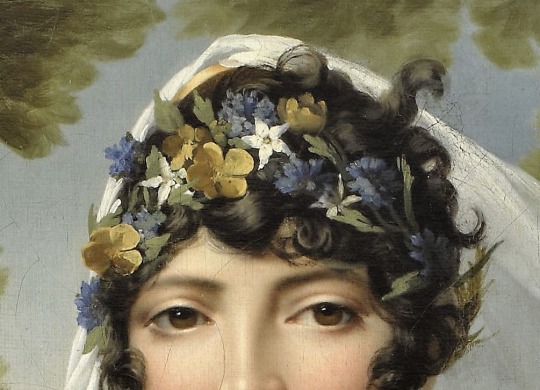
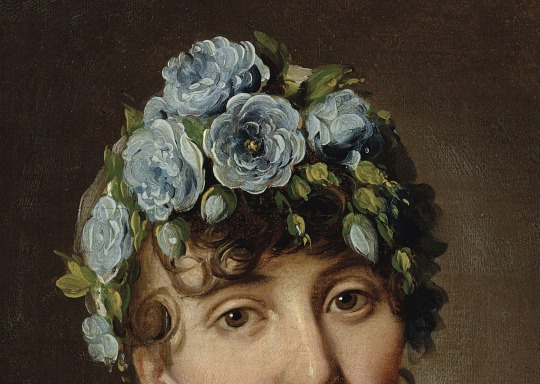


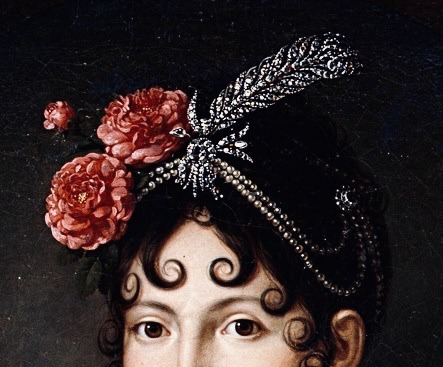
Flowers in the hair - Empire style
#art#19th century#early 1800s#empire#empire style#Napoleonic era#Napoleonic#French art#French#Spanish#Russian#pretty#portrait#hairstyle#hair#beauty#style#fashion#art history#historical art#French empire#first french empire#Napoleonic empire#Napoleon#womens art#flowers
87 notes
·
View notes
Text
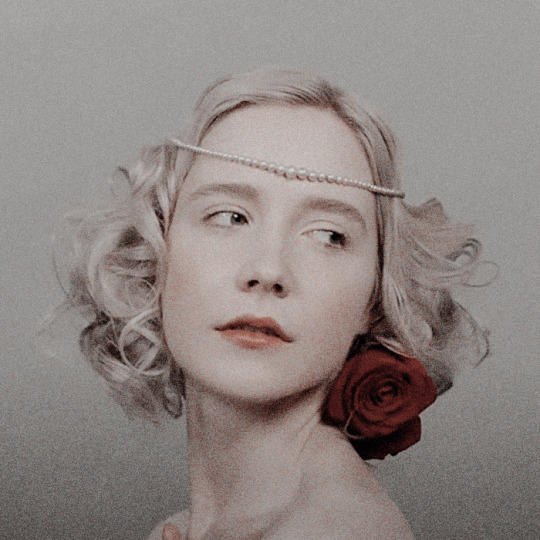
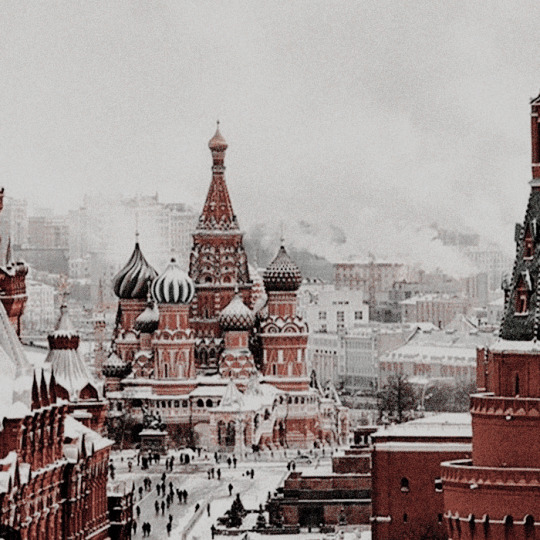
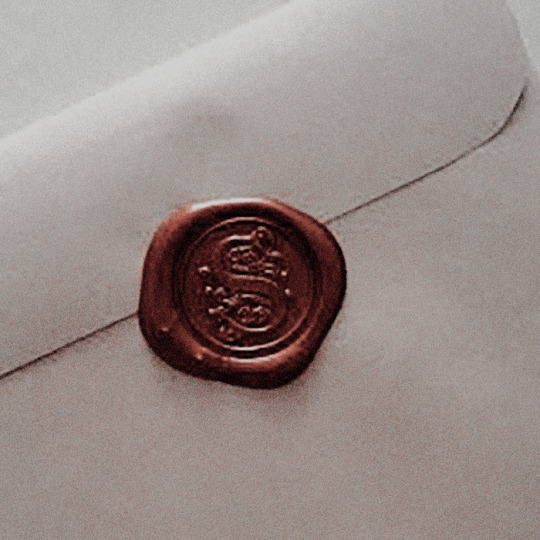

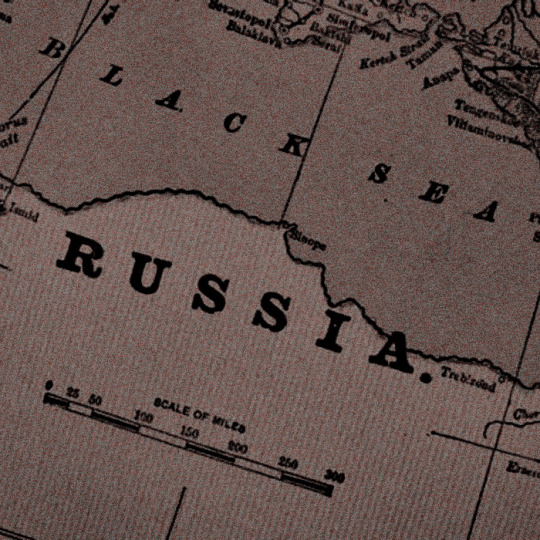
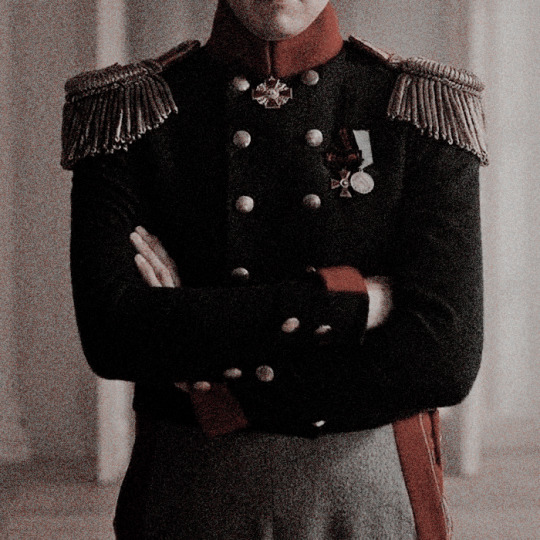



100 years of beauty — 1910's Imperial Russia
The Romanovs inhabit a world of family rivalry, imperial ambition, lurid glamour, sexual excess and depraved sadism; this is a world where obscure strangers suddenly claim to be dead monarchs reborn, brides are poisoned, fathers torture their sons to death, sons kill fathers, wives murder husbands, a holy man, poisoned and shot, arises, apparently, from the dead, barbers and peasants ascend to supremacy, giants and freaks are collected, dwarfs are tossed, beheaded heads kissed, tongues torn out, flesh knouted off bodies, rectums impaled, children slaughtered; here are fashion-mad nymphomaniacal empresses, lesbian ménages à trois, and an emperor who wrote the most erotic correspondence ever written by a head of state. Yet this is also the empire built by flinty conquistadors and brilliant statesmen that conquered Siberia and Ukraine, took Berlin and Paris, and produced Pushkin, Tolstoy, Tchaikovsky and Dostoevsky; a civilization of towering culture and exquisite beauty.
#100 years of beauty#cut#1910s aesthetic#russian empire#decade: 1910s#style#aestehtic#romanov dynasty#1910s style#moodboard#100 yob#europe aesthetic#russian aesthetic
13 notes
·
View notes
Photo

Russian Neo Classic Bronze Gueridon
An unusual Russin Neo-Classic style bronze Gueridon with an ormolu pierced bronze gallery, a transparent cobalt glass circular table top, with a patented bronze scrolling legs centered by an ormolu bronze acanthus and acorn stretcher. 20th century.
#russian design#10th century#neoclassical#empire style#metalwork#table#plant stand#side table#gueridon
96 notes
·
View notes
Text
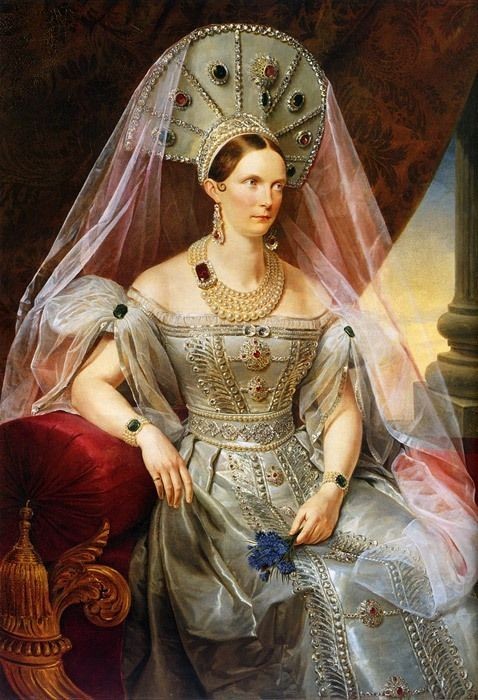
Empress Alexandra Feodorovna (Charlotte of Prussia) in kokoshnik, 19th century.
#im such a sucker for this style of painting#& the kokoshnik is gorgeous#Alexandra Feodorovna#Charlotte of Prussia#russian history#romanov dynasty#russian empire#art history#textile history#traditional russian clothing#kokoshnik#коко́шник#Александра Фёдоровна#holy queue
9 notes
·
View notes
Text
Why Ukrainians didn’t produce a Tolstoy?
there are a lot of things that can piss me off, today it was this tweet:

and all i wanted to do was to ask this person, why the fuck do we need a racist misogynistic piece of shit as a standout author if we have Shevchenko as our prophet?
but you don’t know who he is? of course, you don’t. that is the thing with imperialism: you destroy other cultures while promoting yours as the only way to legitimise your rule. even if those territories are of higher cultural development. but there is always a way out of it: kill them all. kill anyone who poses an existential threat to your hegemony. throw them into jail. forbid them to write and paint. send them to gulag. kill them. torture them. execute them.
if you don’t know Ukrainian literature, it doesn’t mean that it‘s nonexistent. if you don’t know "a Ukrainian Tolstoy", it means there is a Ukrainian Bahrianyi, who was sent to the gulag but ran away and was the first person in the world to openly criticise USSR in his pamphlet Why I am not going back to the Soviet Union. "I don't want to go back to the USSR because a person there is worth less than an insect"
there is a Ukrainian Symonenko and a Ukrainian Stus. there is a Ukrainian Lesya Ukrainka and Olha Kobylyanska. a Ukrainian Kotsiubynskyi, Ukrainian Drach, Ukrainian Olena Pchilka and Ukrainian Lina Kostenko. and so many more of the bravest people who despite all wrote in the Ukrainian language about Ukrainian people and for Ukrainian people.
there are thousands of beautiful texts that weren’t translated because this would’ve harmed the empire. that is why you are reading Dostoevsky and not Khvyliovyi.
but there are also thousands of texts that were never written. just how many more poems would’ve Stus written if he wasn’t killed by the Soviet regime? how many more texts would have Pidmohylnyi, Semenko, Yalovyi, Yohansen, Zerov written if they weren’t shot at Sandarmokh?
just how many texts have the world missed out on because Khvyliovyi committed suicide as he couldn’t live in the world with Stalin’s repressions. "today is a beautiful sunny day. I love life - you can't even imagine how much", - he will write in his death note as he shot himself with his friends waiting for him in the next room.
or maybe there was a Ukrainian Nobel Prize in Literature waiting for Tychyna? maybe, but he submitted to Soviet authorities and started writing hails for the regime, suddenly forgetting his own literary style and living his entire life in fear. fear of what? fear of getting caught. of getting destroyed just as all of the previous Ukrainian intelligentsia.
I’m tired of my people being silenced. I’m tired of my poets being undermined by "great” russian literature. it’s not worth a single Symonenko’s poem. it’s not worth a single paragraph of Bahrianyi‘s prose.
the greatness of russian literature lies on the bones of Ukrainian writers. to be this high, they killed hundreds and they are still doing it today.
the body of Ukrainian children’s writer Volodymyr Vakulenko was found in the mass grave in Izium in September 2022.
there will be a Ukrainian Nobel Prize in Literature, and there will be more Ukrainian books. there will be Ukrainian Zhadan and Zabuzhko, Liubka and Izdryk, Deresh and Kidruk. there will be Ukrainian literature.
another funny thing is that this person is Indian and let me tell you: the fact that you stand up for one empire even when your own country has suffered from the doings of another is evidence of deep colonial trauma and I hope you will cure yourself soon
573 notes
·
View notes
Text
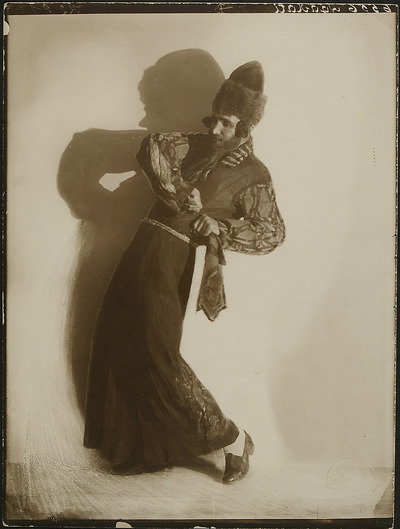
Baruch Agadati dancing as a rabbi in traditional Hasidic garb, late 1920s.
Baruch Kaushansky was born to a Jewish family in Bessarabia in the Russian Empire in 1895. Traveling to Palestine in the early 1900s, he gave himself the name Agadati and began to entertain the local Arabs and Jews with his folk dances and solo ballet recitals. He eventually stayed to become a leading choreographer, painter and film director in Tel Aviv. His bohemian stylings -- one performance featured him openly urinating on the back wall of the stage -- often scandalized the middle class. In 1924, Agadati choreographed a popular Israeli dance known as Hora Agadati. A balletic character folk dance, it mixed the sturdy Dabke of the Palestinian Arabs with Moldavian and Yiddish folklore, which Agadati brought to Tel Aviv from his homeland.
135 notes
·
View notes
Text
I don’t how to explain this, but Kallus is stuck in a Russian Doll style time loop during The Honourable Ones.
Every time he dies he wakes up back in that escape pod. That’s why he is so sure Zeb is going to kill him, he’s done it before.

Think about it. He is pretty sure the Empire is going to find them first, maybe it’s his over-confidence in the Empire, or maybe that happened last time.
He worries about it going dark, maybe because last time they tried to stay down in the hole in the dark, they died.
He knows how to climb the ice pillars even though he’s been there just as long as Zeb and he can laugh at Zeb falling because he’s seen it before and knows he isn’t hurt.
He knows he’s going to need his bo-riffle when they get to the top, because he knows he needs to rescue Zeb from the creature.
He already knows Zebs name because they have had same conversation and Zeb already told him.
Who knows how far the loop goes…

Maybe he went with the Ghost crew and it didn’t end the loop. Maybe he knows the only way he can stop it is if he becomes Fullcrum?
#It’s just a fun idea don’t take this too seriously#Fanfic idea maybe#Always wanted to do a timey wimey thing#kalluzeb#garazeb orrelios#alexsandr kallus#star wars rebels#the honourable ones
304 notes
·
View notes
Text
Who are the Mizrahim? History 101
Where do Jews come from and what is the difference between Sephardim and Mizrahim? Loolwa Khazzoom gives this succint explanation for the Jewish Virtual Library:
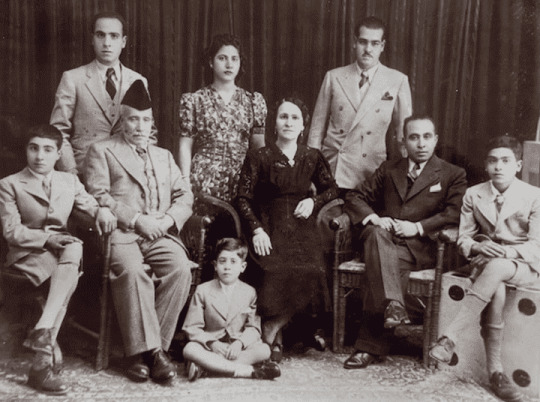
A Baghdadi Jewish family
Regardless of where Jews lived most recently, therefore, all Jews have roots in the Middle East and North Africa. Some communities, of course, have more recent ties to this region: Mizrahim and Sephardim, two distinct communities that are often confused with one another.
Mizrahim are Jews who never left the Middle East and North Africa since the beginnings of the Jewish people 4,000 years ago. In 586 B.C.E., the Babylonian Empire (ancient Iraq) conquered Yehudah (Judah), the southern region of ancient Israel.
Babylonians occupied the Land of Israel and exiled the Yehudim (Judeans, or Jews), as captives into Babylon. Some 50 years later, the Persian Empire (ancient Iran) conquered the Babylonian Empire and allowed the Jews to return home to the land of Israel. But, offered freedom under Persian rule and daunted by the task of rebuilding a society that lay in ruins, most Jews remained in Babylon. Over the next millennia, some Jews remained in today’s Iraq and Iran, and some migrated to neighboring lands in the region (including today’s Syria, Yemen, and Egypt), or emigrated to lands in Central and East Asia (including India, China, and Afghanistan).
Sephardim are among the descendants of the line of Jews who chose to return and rebuild Israel after the Persian Empire conquered the Babylonian Empire. About half a millennium later, the Roman Empireconquered ancient Israel for the second time, massacring most of the nation and taking the bulk of the remainder as slaves to Rome. Once the Roman Empire crumbled, descendants of these captives migrated throughout the European continent. Many settled in Spain (Sepharad) and Portugal, where they thrived until the Spanish Inquisition and Expulsion of 1492 and the Portuguese Inquisition and Expulsion shortly thereafter.
During these periods, Jews living in Christian countries faced discrimination and hardship. Some Jews who fled persecution in Europe settled throughout the Mediterranean regions of the Ottoman (Turkish) Empire, as well as Central and South America. Sephardim who fled to Ottoman-ruled Middle Eastern and North African countries merged with the Mizrahim, whose families had been living in the region for thousands of years.
In the early 20th century, severe violence against Jews forced communities throughout the Middle Eastern region to flee once again, arriving as refugees predominantly in Israel, France, the United Kingdom, and the Americas. In Israel, Middle Eastern and North African Jews were the majority of the Jewish population for decades, with numbers as high as 70 percent of the Jewish population, until the mass Russian immigration of the 1990s. Mizrahi Jews are now half of the Jewish population in Israel.
Throughout the rest of the world, Mizrahi Jews have a strong presence in metropolitan areas — Paris, London, Montreal, Los Angeles, Brooklyn, and Mexico City. Mizrahim and Sephardim share more than common history from the past five centuries. Mizrahi and Sephardic religious leaders traditionally have stressed hesed (compassion) over humra (severity, or strictness), following a more lenient interpretation of Jewish law.
Despite such baseline commonalities, Middle Eastern and North African Mizrahim and Sephardim do retain distinct cultural traditions. Though Mizrahi and Sephardic prayer books are close in form and content, for example, they are not identical. Mizrahi prayers are usually sung in quarter tones, whereas Sephardic prayers have more of a Southern European feel. Traditionally, moreover, Sephardic prayers are often accompanied by a Western-style choir in the synagogue.
Mizrahim traditionally spoke Judeo-Arabic — a language blending Hebrew and a local Arabic dialect. While a number of Sephardim in the Middle East and North Africa learned and spoke this language, they also spoke Ladino–a blend of Hebrew and Spanish. Having had no history in Spain or Portugal, Mizrahim generally did not speak Ladino.
In certain areas, where the Sephardic immigration was weak, Sephardim assimilated into the predominantly Mizrahi communities, taking on all Mizrahi traditions and retaining just a hint of Sephardic heritage — such as Spanish-sounding names. In countries such as Morocco, however, Spanish and Portuguese Jews came in droves, and the Sephardic community set up its own synagogues and schools, remaining separate from the Mizrahi community.
Even within the Mizrahi and Sephardi communities, there were cultural differences from country to country. On Purim, Iraqi Jews had strolling musicians going from house to house and entertaining families (comparable to Christmas caroling), whereas Egyptian Jews closed off the Jewish quarter for a full-day festival (comparable to Mardi Gras). On Shabbat, Moroccan Jews prepared hamin (spicy meat stew), whereas Yemenite Jews prepared showeah (spicy roasted meat), among other foods.
Read article in full
The post Who are the Mizrahim? History 101 appeared first on Point of No Return.
Read in browser »
71 notes
·
View notes
Text
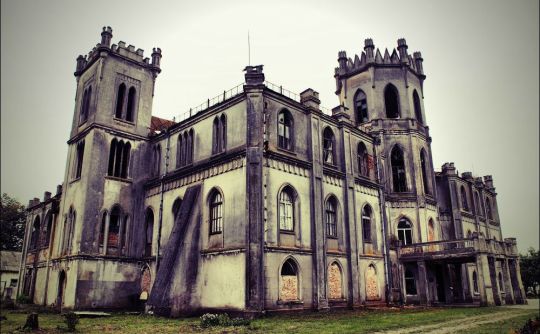



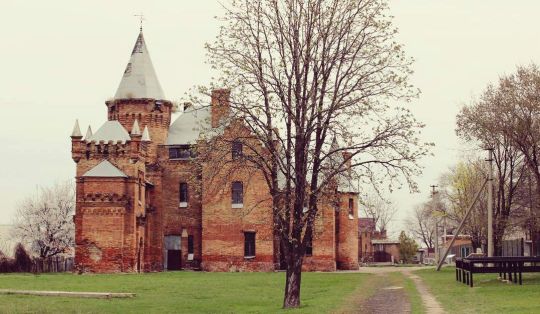
Samples of abandoned palace architecture of Ukraine:
Tereshchenko Palace
The village of Chervone, Andrushiv district, Zhytomyr region.
The style of the palace is Neo-Gothic. It was built at the beginning of the 19th century at the expense of the Polish nobleman Adolf Groholsky. The estate was bought by Ukrainian industrialists and philanthropists - Tereshchenko brothers, who expanded the palace and the park.
The palace began to fall into disrepair with the arrival of communist regime. After 1917 here were located a children's boarding school and vocational school. Later the building survived a fire.
Nowadays, the palace of the Groholsky-Tereshchenkos belongs to the women's monastery of the Holy Nativity of Christ. In addition to the palace, the stables, the left wing and the fountain have been preserved.
Oosten-Saken Palace
Kyiv region, Kyiv-Svyatoshinskyi district, between Myrotske and Nemishaeve villages.
It is believed that the palace was built in the 19th century at the expense of Count Karl Saken. It was an Ancestral estate. The count's descendants had the surname Osten-Saken, which is where the conventional name of the estate comes from.
In Soviet times, the palace housed a biochemical plant. After a fire broke out at the factory, the palace burned down and only the walls remained.
Dakhovsky Palace
Village of Leskovo, Monastyryshche district, Cherkasy region.
The style of the building is Neo-Gothic. Leskiv Palace was built at the expense of magnate Casimir Dakhovsky in the middle of the 19th century.
The complex consists of a palace, outbuildings, service premises and stables. In June 2013, the palace received the status of a historical and cultural reserve of state importance.
Palace of the Muravyov-Apostles
the outskirts of Khomutets village, Myrhorod district, Poltava region. The estate was built at the beginning of the 19th century by a descendant of Ukrainian hetman Danylo Apostol - diplomat Ivan Muravyov-Apostol. The palace is surrounded by considerable French park. Ivan Muravyov-Apostol left the estate and went abroad after the failure of the Decembrist uprising.
Popov estate
Vasylivka town, Zaporizhzhia region.
The style of the preserved buildings is Neo-Gothic. Vasyl Popov, a general of the Russian Empire, founded a settlement here at the end of the 17th century. In the 19th century, the grandson of the general, who was also named Vasyl, developed the estate and built numerous farm buildings.
Source: https://tsn.ua/tourism/10-zanedbanih-palaciv-ta-zamkiv-ukrayini-yaki-mozhut-zniknuti-nazavzhdi-1040310.html
#ukraine#eastern europe#architecture#palace#history#palace architecture#abandoned buildings#abandoned#abandoned palaces
58 notes
·
View notes
Photo
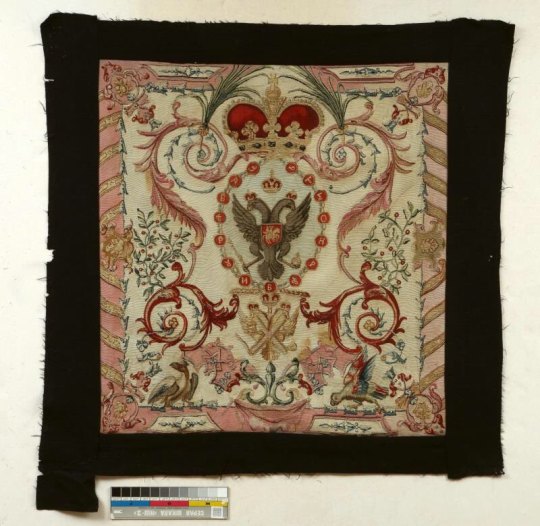

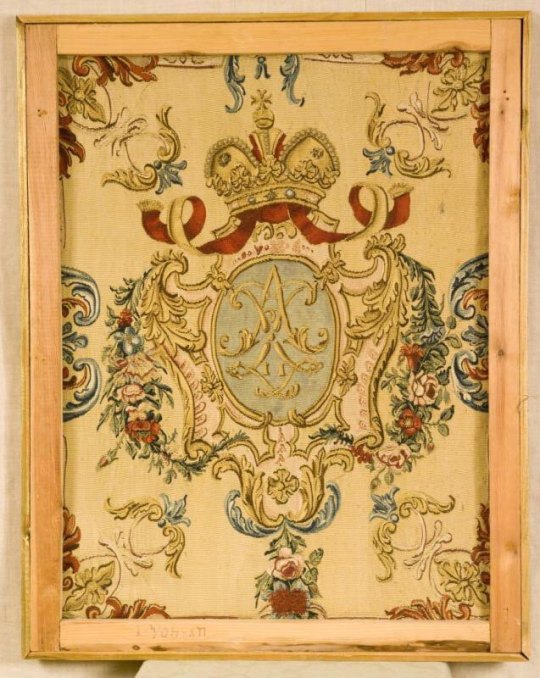



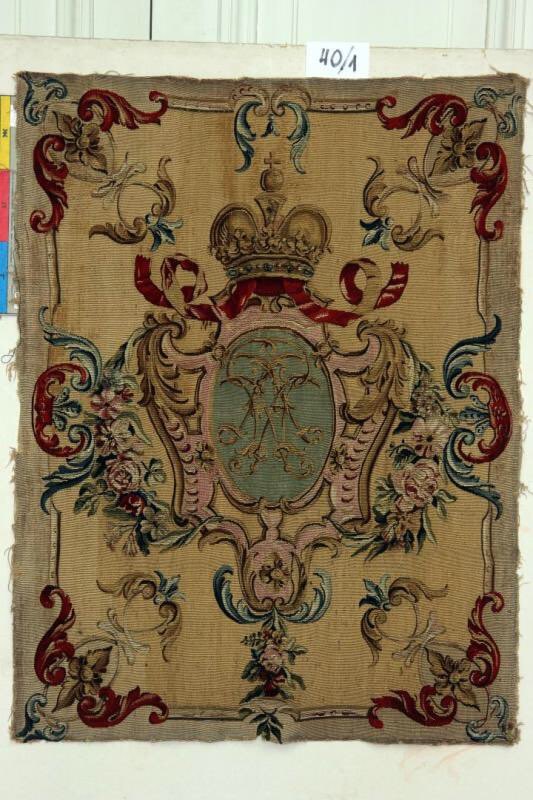
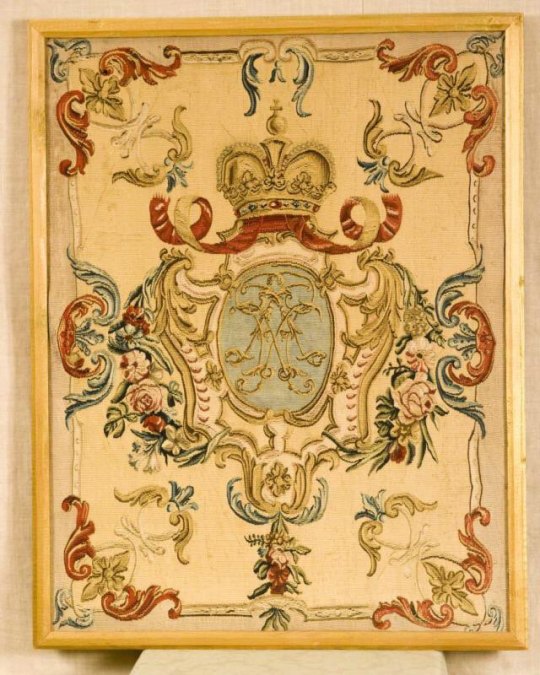
Folding-screen panels which survived from the Corner Reception-Room of Her Majesty at the Alexander Palace in Tsarskoe Selo
Here you have all of the tapestry panels from the folding/privacy screens which were used to decorate the Corner Reception-Room of Her Majesty. Originally, this room was decorated with three folding-screens, each of them were gilded, and were most likely executed by either the firms of N. Svirsky or F.F. Meltser & Co. (R.F. Meltser was the Court Decorator to Their Majesties). These tapestries which were fitted to various folding-screens (paravents) can be identified in the autochrome plate made during the late Summer of 1917 by war-time photographer Andrei Zeest. One tapestry panel depicts the double-headed eagle surrounded by scrollwork, filigree and ribbons. The other tapestry panels are said to be from the reign of King Louis XV of France by way of the monogram which is depicted in the center of each of the panels. All of the tapestry panels reside at GMZ Pavlovsk.
Please enjoy! Also, if you re-share and/or post these photographs elsewhere PLEASE credit Gosfond and GMZ Pavlovsk accordingly! Thank-you!
________________________________________________________________
Source:
Gosfond (State Museum Catalogue of the Museum Fund of Russia)
Link of courtesy:
www.goskatalog.ru
#alexander palace#gmz tsarskoe selo#gmz pavlovsk#tsarskoe selo#romanov#imperial russia#neoclassical#russian empire style#russian archival material#gosfond#empress alexandra feodorovna#louis xv#svirsky#meltser#furniture#folding screen#paravent
109 notes
·
View notes
Text
Pathologic and the Town's Russianness: 2
In part 2, let's explore the Town's social structure, compare it to what Russian Empire had before the Revolution, and see if the two are alike.
Two warnings have to be kept in mind when exploring this topic.
First, of course, the Kin are outside its scope, because they're a society quite apart from the real steppe nomads the Russian state had struggled against since before it became an Empire. So it'd be senseless to say "oh, but we can't really hear any Kin mentioned among the nobility in the Capital the way Apraksins, Arakcheevs, Yusupovs, or any number of other noble families were, thus the Capital is nothing like St.Petersburg!"
Second, when comparing the social structure shown in the game, we have to use the Imperial society as a yardstick, and not just because there's said to be an Emperor in the Capital, but because after the Empire fell, the Russian society changed quite radically, guided by purely ideological concepts, so the comparison would be meaningless from the start.
Now, that said, the society of Imperial Russia was explicitly a class-based one. There was some class mobility, and in the timeframe the game is set in the whole structure was under pressure of the new economic realities (as shown in quite a number of classical pieces, starting with, say, Checkhov's Cherry Orchard), but still, it was rigid enough.
And the Town's ruling families fit into said structure well enough.
The Kains could well be Russian nobility of the high noble stock. That works well with what the game tells us of the "blood of heroes" flowing in their veins; and it explains the source of their wealth, too.
Similarly, the Saburovs fit the mold quite well, as a nobility-for-service family. Alexander in particular is a match, with his inflexible values in his P2 depiction.
Now, the Empire had formally codified forms of address for high nobility and top-ranked officials (think "your Highness" or "your Excellency"), and our marry gang of healers, despite all being commoners, do not follow these, but it's nothing but a nitpick, since doing otherwise could've made the likeness of the Empire all too close.
The Olgimskys are a bit more of a mixed bag. They're clearly rich merchants, but they don't exactly fit the stereotypical depiction to a T, starting with Big Vlad's clean-shaven visage (compare him to the Morozovs or the Ryabushinskys, for instance). Beard fashions differed between classes, and with the number of Old Believers among the merchants (who considered shaving blasphemous), full beards were ever in style among that class - even Peter I's laws that leavied taxes on beards did little to change that. But then again, Olgimskys have a Western Slav surname, who's to tell, perhaps they come from Polish or Jewish stock, like the historical Poliyakovs.
A much more significant difference would be their apparent irreligiousity. The way religion in Pathologic 2 differs from what happened in the Russian Empire deserves its own post, I think, so I'll just note that the Olgimskys as merchants not using their religion (whatever it might be: Old Believer or mainstream Orthodox Christianity, Judaism or even Catholicism) at least as an ostentatious outlet for charity differentiates the game's setting from the Empire; same as, of course, the lack of priesthood class in its entirety.
There are other classes missing, naturally, but the reasons for that, I believe, have more to do with establishing the game's themes, as discussed in the intro part of my blog post series. Peasants cannot be shown, because fields, gardens and orchards stretching for kilometers around the Town-on-Gorkhon would undermine the theme of contraposition between the Town and the Steppe, removing the latter physically well out ofsight. Similarly, cossacks, ever present during the Empire's forays into the Eurasian steppes, cannot be present in the game: they did agriculture just as much as peasants; their presence as an organized fighting force in the Town would undermine the othering of the Army; and their styles would be too distinctive to maintain plausible difference from the historical Russian Empire.
The one class that's left to discuss are the commoners: the townsfolk and the factory workers. And they look and feel passably close to the commoners in the Empire, to a surprising degree; except, perhaps, for the shortage of facial hair and headwear. Perhaps they're even a bit too well-off for the underclass in the times when its exploitation was at its worst. Then again, the game design documents state they're meant to be "depersonalized in the utmost, a many-headed hivemind. Not a collection of individuals but a mass, devoid of color and personality. Soulless". Which is an impression of the common man normal enough for the Russian intelligentsia throughout time, yet one that I personally deeply despise, due to being a morlock myself (see also Lev Gumilev with his "what kind of intelligenstia am I when I have a profession").
So, to sum this part up: the social structure of the Town is passably Russian, the most significant difference being the lack of priesthood. The lack of the more distinctive classes, the ones that most differentiated Russia in the early XX century from the other European states of the time, can mostly be explained away by the game needing to maintain is themes and creative vision in the areas well outside of sociology.
26 notes
·
View notes
Text

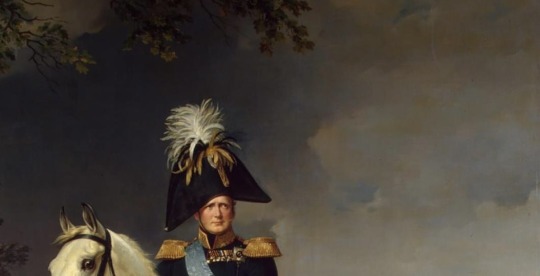
Napoleonic era bicornes
#bicorne#cocked hat#19th century#napoleonic era#Napoleonic wars#tsar alexander i#Frederick William III of Prussia#Frederick William III#Prussia#Russian#Russian empire#tsar#french empire#first french empire#art#napoleonic#empire#empire period#empire style#history#historical fashion#fashion#men’s fashion#painting#paintings#portrait#art history#bicorn#hat#pretty
37 notes
·
View notes
Note
transrussian tips :3
As someone who has fully transitioned - of course < 3

TRANS - RUSSIAN .. 🇷🇺
Start by researching about the culture ! Russia is Slavic, so start by researching Slavic traditions and culture !
Educate yourself about the COUNTRY. This may be harder as everyone has their own opinions, yet it is still very recommended to research the history of the country - going from when it was an empire all the way to now !
Prog the obvious - LEARN THE LANGUAGE !! Russian was my second language so I didn't really need to try with this, BUT ! here's some tips ! First - Learn the alphabet, learn how to read the words, even if you don't understand them ! Some words can be similar to other languages, so being able to understand a word can give you a lot of euphoria ! Continue learning by learning simple words and phrases ! ( Language apps are recommended !! )
Accent - Russians have THICK accents, keeping it when speaking English can help a lot !
Watch Russian movies with English subtitles to continue learning ! THIS WILL HELP YOU SO MUCH !!!!! There are such good Russian movies out there !!
RUSSIAN LITERATURE !!!!!111!!1! Read the SHIT out of Dostoevsky, learn how to recite Pushkin !
Another thing with learning - If you are in school, learn the Russian way of school. Russian school are very strict, so being strict with your learning can be good ! Write your notes in Russian, look up source material in Russian !
Now appearance wise, anyone can look Russian ! This is based on how YOU want to appear, if it would be hair colour or skin wise ! But remember, Russians are very diverse with how they look - they can be brunette or blonde, mostly brown or green eyed, pale or slight tan ! <33
Style - now Russia has its own aesthetics and fashion, I recommend getting VK ( the Russian version of Facebook ), there are a lot of inspo for outfits <3
Cultural nostalgia - I feel like this can help A LOT. There are a lot of ' nostalgia ' account centred around childhood in Slavic countries, and this can be helpful with euphoria <3 Things that helped me were Russian carpets, old s*viet apartments, cosy grandma cooking <3
Last notes : you do not need to live in Russia to be Russian ! I say that I am Russian as ETHNICITY ! <33 Remember, you are loved and adored <3
Удачи в переходе <3


#.ᐟ - my dear corpse ..#rq 🌈🍓#radqueer#rqc🌈🍓#rq#transid#pro transx#transx#transid please interact#transid safe#rq safe#rq please interact#pro rq 🌈🍓#rq community#pro radq#pro rq#rqc 🌈🍓#radqueer 🌈🍓#rq 🍓🌈#🍓🌈#pro 🍓🌈#rqc 🍓🌈#🍓🌈 safe#radqueer 🍓🌈#🌈🍓#radqueer please interact#radqueer community#radqueer safe#radblr#pro radqueer
23 notes
·
View notes
Photo

Russian Neo Classic Commode
A fine Russian neoclassic mahogany three-drawer commode with brass trim and mounts, with diamond-shaped inlays and a stepped top, raised on canted square tapered legs. early 19th century
31 notes
·
View notes
Text
Fanvid recs: Louis/Lestat
I put together a list of some of my favourite Loustat fanvids for Louis month at @iwtvfanevents. There’s a fair variety here, in terms of tone, music, and general vidding style.
(I put together a separate rec list for Louis character vids here.)
General Trigger Warnings (not all apply to every single vid): violence, blood, murder, some gore, fire, domestic violence, suicide.
bloodsport by @lezarus - Loving you’s a bloodsport (music by Raleigh Ritchie)
cherry (youtube link) by @cuntylestat / xScribbledDreaming - I fall to pieces when I'm with you, I fall to pieces. My cherries and wine, rosemary and thyme. And all of my peaches (are ruined) (music by Lana Del Rey)
Horny Angry Tango (youtube link) by @jennaflare - Our love has transformed into hate. Damn! Sex right now would sure be great (music from Crazy Ex-Girlfriend)
I Love You Like an Alcoholic (youtube link) by @fluffyrabbitofdoom - One last kiss, I need you like I need a broken leg (music by The Taxpayers)
Mamma Mia (youtube) by @homosexualslug / bravedeviatoredits - Here I go again! (music by Abba)
Me and My Husband by @claudiadupointedulac - I steal a few breaths from the world for a minute, and then I'll be nothing forever (music by Mitski)
Me and the Devil by alittlestitious339 - And I’m gonna see my man til I get satisfied - lots of dialogue from the show is used, subtitles available by pressing the CC button (music by Soap&Skin)
no children by @tallahasseemp3 - I hope I lie, and tell everyone you were a good wife. And I hope you die, I hope we both die (music by The Mountain Goats)
no more dreaming of the dead by rabbitmaze - In the shape of things to come, Too much poison come undone. - This uses a lot of dialogue from the show, but there’s subtitles if you press the CC button. (music - starts with Placebo, ends with Florence and the Machine)
off to the races (youtube link) by @cuntylestat/ xScribbledDreaming - My old man is a bad man (music by Lana Del Rey)
Rid of Me (youtube link) by @jennaflare - Tie yourself to me, no one else, no. You're not rid of me (music is a cover of PJ Harvey by Nilüfer Yanya)
Rip (youtube link) by @idontwikeit - You were there to rip apart, It always ends without a start (music by Snow Ghosts)
smoking section by @greatmortality - And sometimes I go to the edge of my roof, and I think I'll jump just to punish you. And if I should float on the taxis below, no one will notice, no one will know (music by St. Vincent)
Strangelove by sarpazoa - There’ll be times when my crimes will seem almost unforgivable (music by Depeche Mode)
vampire empire by @dykekingofhell - Where you can't seem to hold me, can't seem to let me go. So I can't find surrender and I can't keep control (music by Big Thief)
who is in control? (youtube link) by @annefraid / ohann4115 - dual character study of Louis & Lestat - Goddamn right, you should be scared of me (music by Halsey)
позови меня с собой (ask me to come with you) (youtube link) by @fireboiii - This song is in Russian, which I don’t know, so I have no lyrics for you. But it’s lovely. (music by Palina)
54 notes
·
View notes